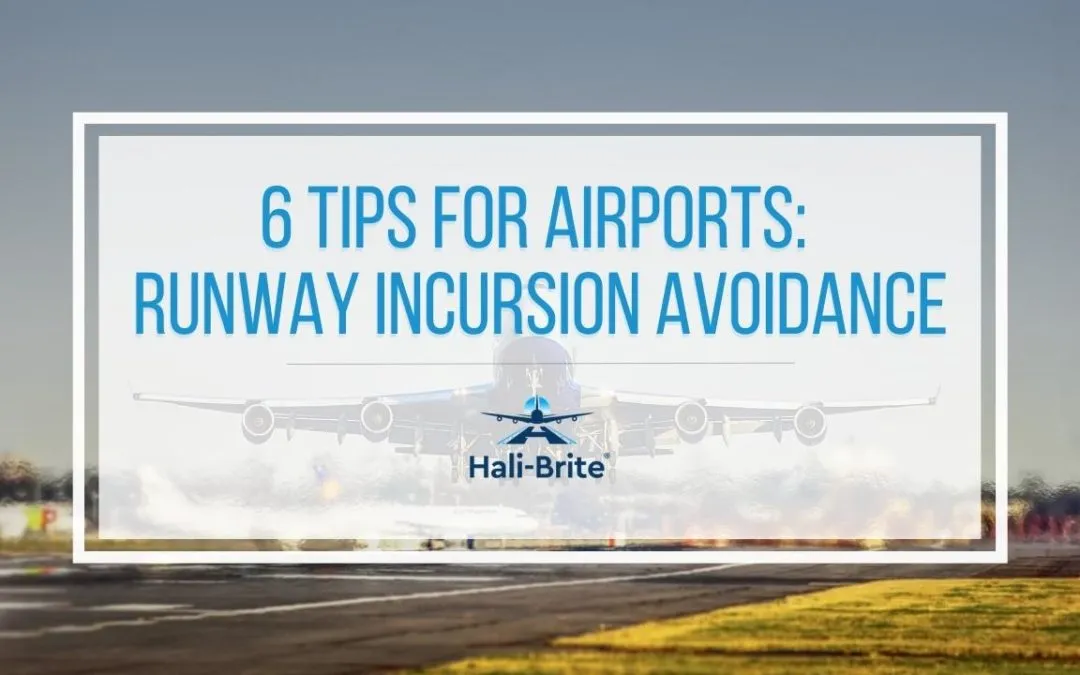As the number of aircraft and flight operations grows, airport accidents also increase. Plane crashes and mishaps do not always occur mid-flight – unfortunately, some of the most devastating aircraft accidents happen on the ground, caused mainly by runway incursions. The leading causes of runway incursions are discussed in this article, followed by helpful tips in avoiding runway incursions and ensuring safe flight operations.
What Are the Leading Causes of Runway Incursions?
A runway incursion happens when an aircraft comes close to collision with another aircraft, vehicle, or person within the take-off and landing area. According to the Federal Aviation Administration (FAA), runway incursions can be categorized as follows:
-
- Category A – A collision almost occurred yet was narrowly avoided.
- Category B – There is a decrease in separation between the aircraft and an obstacle that needs an immediate evasive response in order to avoid collision.
- Category C – There is ample time and distance to avoid the potential collision.
- Category D – There are collision hazards within the designated take-off and landing area but without immediate risk of collision.
In most cases, runway incursions happen due to human errors. As specified by the FAA, the causes of runway can be summarized into three categories:
Operational Incidents
Air traffic controllers ensure that an aircraft maintains safe separation from another aircraft or object. Operational incidents happen when an air controller fails to maintain the minimum separation required. Loss or decrease of separation can cause collisions that may result in damages and injuries.
Pilot Deviations
A pilot maneuvers the aircraft during take-off and landing operations. Pilot deviations are actions taken by the pilots that are not in accordance with the FAA regulations. Some pilots, for example, taxi along a busy runway without permission from the air traffic control, causing runway incursions.
Vehicle/Pedestrian Deviations
Vehicle or pedestrian deviations are the unauthorized entry of vehicles or pedestrians within take-off or landing areas. To prevent incursions, no obstacles or personnel should cross an active runway unless required or allowed by the air traffic control.
Six Tips To Avoid Runway Incursion
Runway incursions can lead to plane crashes and fatalities. Preventive measures must be followed and maintained to avoid the possibility of runway incursions. Here are six runway incursion avoidance tips that you can employ during flight operations:
Utilize An Airport Diagram
Airport diagrams are essential during flight operations. An airport diagram allows you to visualize the taxi route upon receiving clearance from the air traffic control. Before flight operations, take time to study the airport diagram to better anticipate the airport taxi route. Moreover, aircraft are usually equipped with electronic flight bags. You can use the electronic flight bag to access the airport diagram during take-off and landing operations.
Maintain a Sterile Cockpit
The sterile cockpit rule prohibits crew members from doing non-essential activities during critical phases of flight operations. These activities include eating meals, having unnecessary conversations with other crew members, and reading publications unrelated to the conduct of safe flight operations. Maintaining a sterile cockpit allows you to communicate effectively with the air traffic control and avoid distractions, preventing runway incursions and accidents.
Follow ATC Instructions
The instructions given by ATC must strictly be followed to avoid runway incursions and accidents during take-off and landing operations. Do not hesitate to ask for clarification if instructions or clearances are unclear. If you are unfamiliar with the taxi routes, you can also request step-by-step taxi directions from ATC. Furthermore, writing down ATC instructions can assist you in keeping track of clearances issued and ensuring that you are receiving the correct instructions.
Communicate Clearly
Good communication between the pilot and ATC is important to maintain a safe flight operation. Proper communication procedures must be followed to avoid runway incursions. Before transmission to ATC, confirm you are using the correct radio frequency. Use the standard phraseology in responding and do not perform any non-essential activities when communicating with ATC. Unless an emergency occurs, your transmission must be as concise as possible. A readback is necessary, particularly when ATC issues hold short clearances. Make sure that your readback is clear and complete to prevent any miscommunications.
Maintain Situational Awareness
Situational awareness is the understanding of your environment. Understanding is not only limited to the gathering of relevant information, but also involves information processing and decision-making. As the pilot, your environment includes the aircraft, the ATC providing instructions, and the weather situations. Failure to maintain situational awareness can result in runway incursions and aircraft accidents. For example, when the pilot of Comair flight 5191 lost situational awareness and took a different runway, the plane crashed, killing the pilot, flight attendants, and 47 passengers.
Understand Airport Navigation Aids
Understanding airport navigation aids, such as signages, markings, and lightings, allows you to navigate safely during take-off and landing operations. Airport signs, markings, and lights provide information about your location, which is extremely useful in runway incursion avoidance. An enhanced centerline taxiway marking, for example, indicates an incoming runway, while destination signages identify airport destinations. Airport lighting, such as taxiway and runway lights, are installed to guide you during navigations, especially in low-visibility conditions. Review each navigation aid when necessary to ensure safe flight operations and prevent runway incursions.
Lighting Systems Make Airports Safer
Lighting systems can significantly help prevent runway incursions during flight operations, making airports safer. We at Halibrite can assist you with your airport lighting needs. We can supply you with an affordable FAA-certified runway incursion avoidance lighting system that enhances airport navigation safety. Contact us here today!


